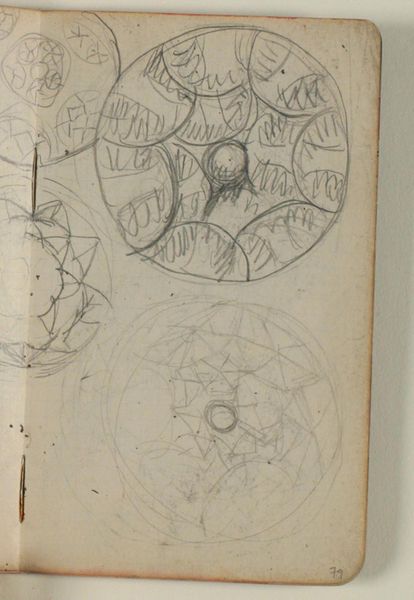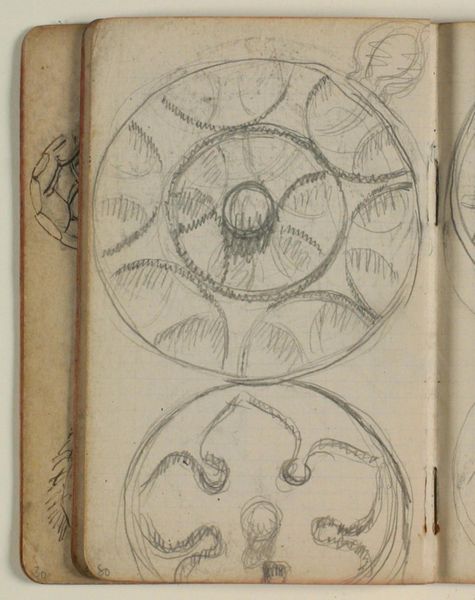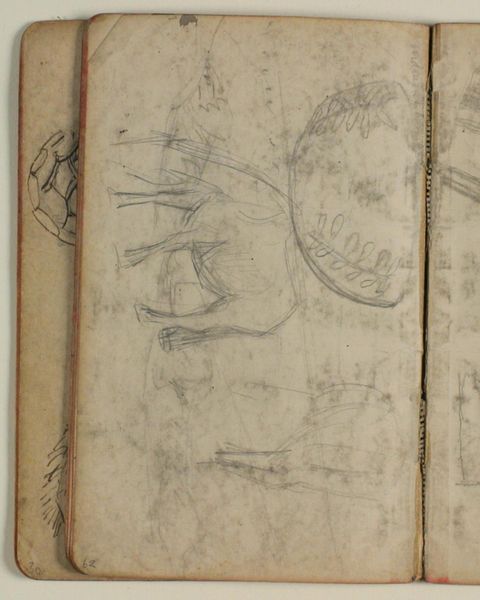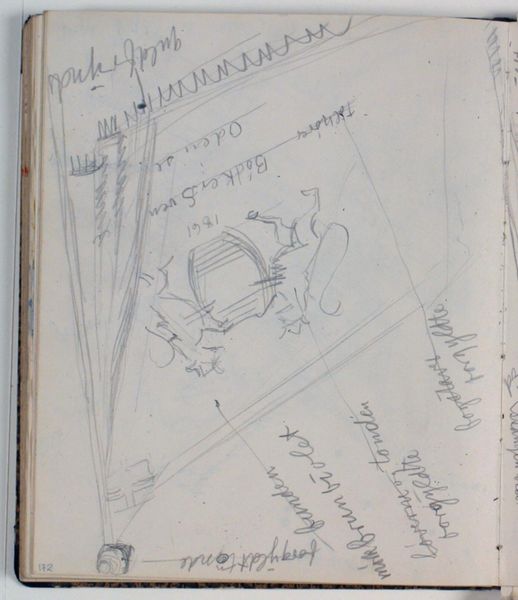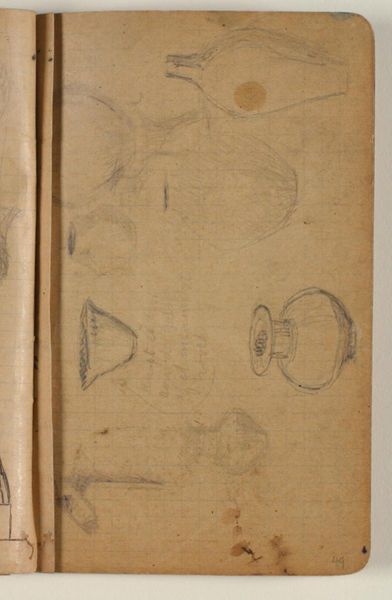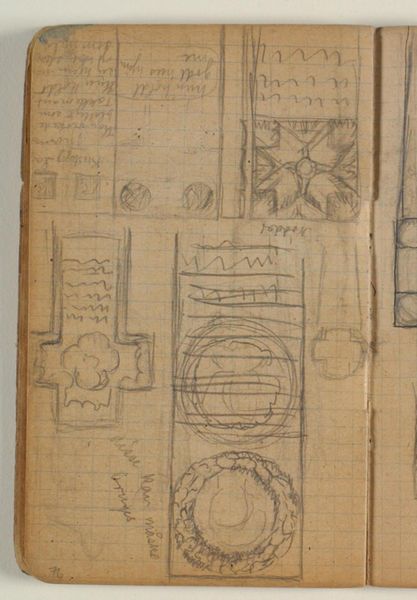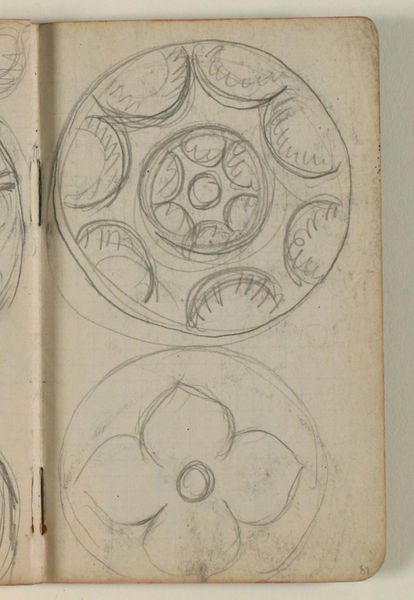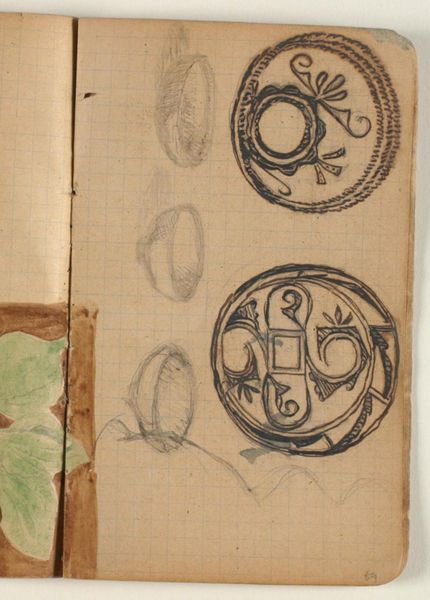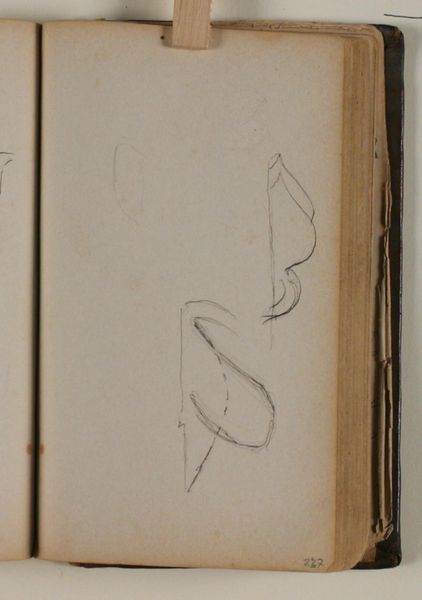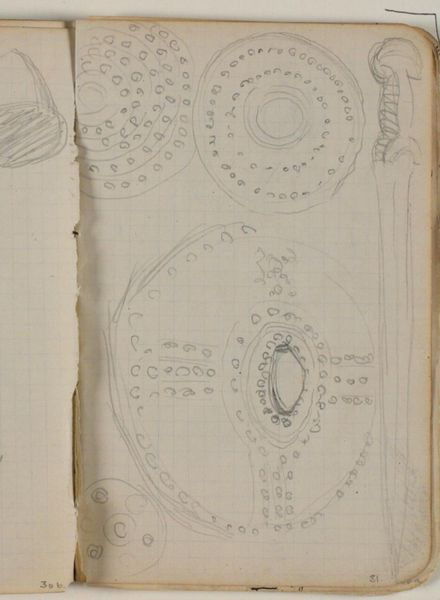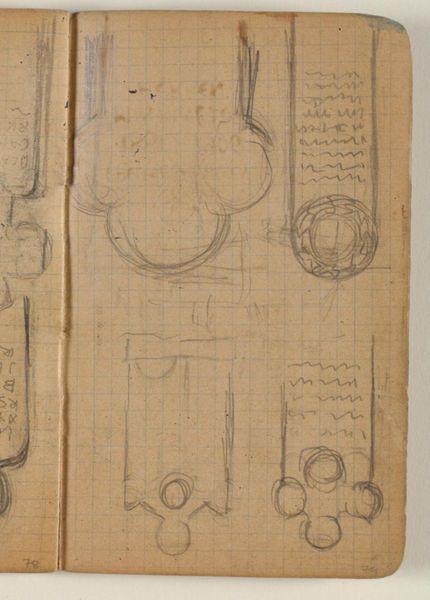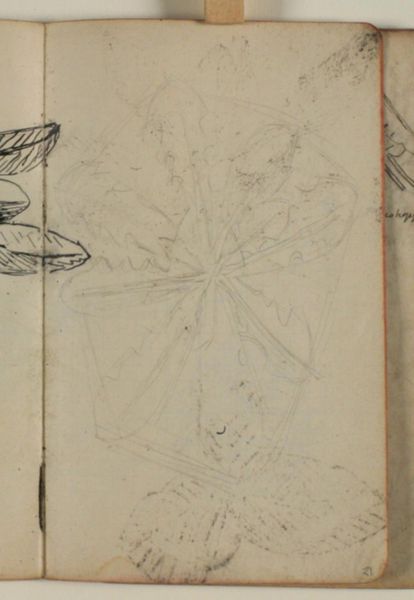
drawing, pencil
#
drawing
#
art-nouveau
#
coloured pencil
#
geometric
#
pencil
#
line
Dimensions: 161 mm (height) x 96 mm (width) (bladmaal)
Curator: Here we have "Studier af cirkulære ornamenter," or "Studies of Circular Ornaments," a drawing created between 1906 and 1910 by Niels Larsen Stevns. Editor: It's quite striking, a page filled with circles morphing into intricate geometric forms. It feels like looking into the mind of someone obsessed with structure and pattern, though in a rather dreamlike state, if I can say so. Curator: Absolutely, and I'd say that the seemingly simple form, the circle, serves here as a playground for explorations of early twentieth-century anxieties surrounding design and the shifting sociopolitical landscapes. We might view it as a visual meditation on identity amidst a rapidly changing world. Editor: My mind jumps immediately to medieval rose windows, stylized into something almost futuristic, yet hand-drawn. The circular motif echoes throughout, like looking at cosmological maps, an ancient drive to define the cosmos around us and perhaps order them through symbolism? Curator: That's a compelling association, seeing the cosmological in Stevns's drawings. Think, though, how Art Nouveau attempted to democratize design; here is a series of drawings, not necessarily finalized pieces, but sketches almost. These were to potentially allow more widespread accessibility to innovative concepts for all. How were they intended to influence perception within various echelons of Danish culture at the time? Editor: It is accessible—in the sense that we witness process. Even the mistakes or shifts in the artist's hand have been left open for our assessment. You read so many different things in its incomplete nature: humility, openness... but then, there are the symbolic layers implied, like fractals almost... as though each circular form implies another contained within it ad infinitum, suggesting an overwhelming depth. Curator: Well put. Larsen Stevns seems caught between democratization through accessibility of style, as well as some grander desire to evoke larger societal tensions in subtle ornamental vocabularies. I love to see the discourse opening around an artwork like this, to see what is hiding beneath the surface. Editor: Indeed. What starts out as sketches can give rise to surprisingly diverse interpretations, revealing deeper symbolic structures across periods. It's remarkable.
Comments
No comments
Be the first to comment and join the conversation on the ultimate creative platform.
